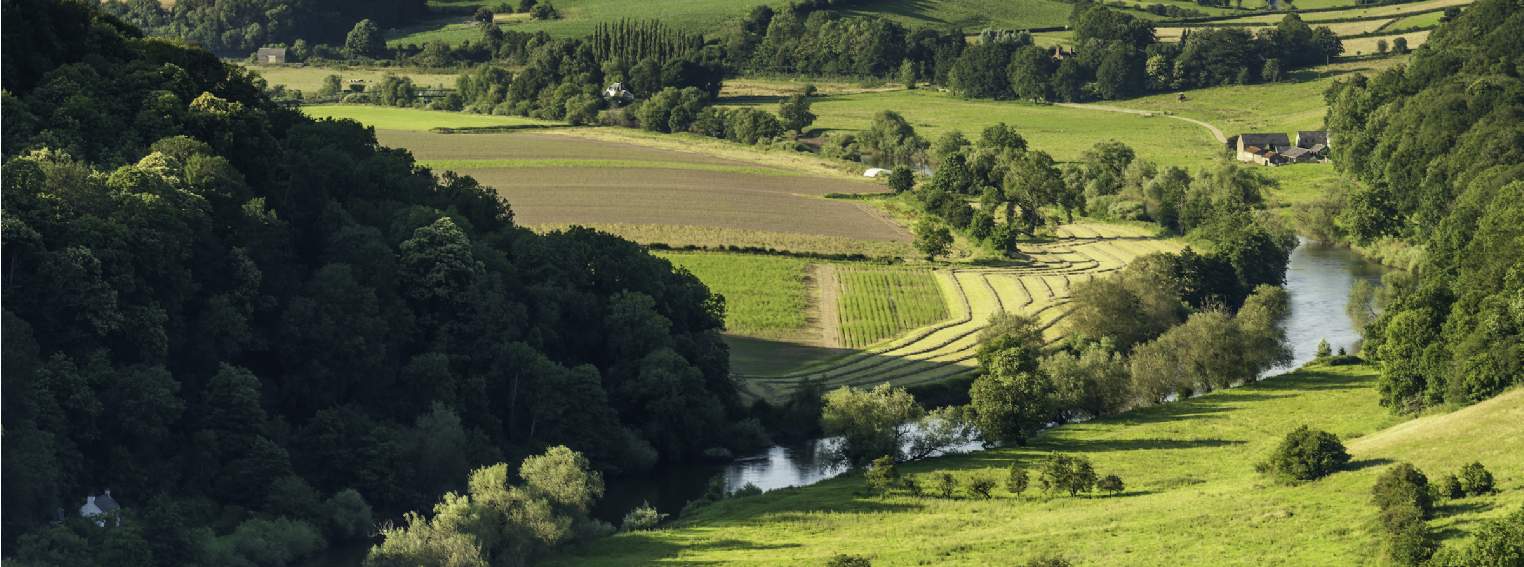The UK officially withdrew from the EU on 31 January 2020. Since then, agricultural and environmental policy has been under the control of the devolved governments. Phasing out the Common Agricultural Policy and creating new rural policies after 40 years of EU-led legislation is no simple feat, particularly against a backdrop of environmental crises and growing interest in how and why we use rural land.
We now have an indication of how the Scottish, Welsh and English Governments intend to shape their respective future policies. All have prioritised replacing area-based payments with a greater focus on environmental outcomes. Read on to find out which we think has proposed the best policy for farmers.
Which country is moving fastest?
England, easily. The Agriculture Act 2020 sets the scene for England’s future rural policy and since then Defra has undertaken multiple tests, trials and pilots and the Sustainable Farming Incentive (SFI) is already operational. However, its vision is for an extended agri-environment scheme only. Both Wales and Scotland have encompassed wider policy goals.
The Scottish Government has set out a vision for agriculture, a test programme for its land management scheme and has just opened a consultation into its future Agriculture Bill. The Welsh Government is at the back of the pack and has only recently published its scheme proposal, planning to bring a new Agriculture Bill to the Senedd later this year.
Which policy is the most detailed?
England’s policy is the most developed, however the Welsh Government’s recently released plan is admirably detailed and well thought through.
Which policy is the most joined up?
The Welsh and Scottish Government have taken much more time to reveal any details about their future rural policies, and although frustrating for some farmers, this may have paid off as both have ensured that their policies join the dots between all the pressures facing rural land use today.
In comparison, England’s policy is more focused on agri-environmental measures such as Environmental Land Management (ELM) with relatively little detail on food and farm productivity so far.
Which policy is the most focused on food production?
England’s policy was initially criticised for hardly mentioning food production. Scotland passed its own Good Food Nation Act in June 2022 which enshrines in law the Scottish Government’s commitment to ensuring that people across Scotland benefit from local food production and consumption.
Rural policy proposals in both Scotland and Wales position sustainable food production as a central and essential objective. England is likely to retrofit an emphasis on food production into its policy as a result of geopolitical concern around global food security.
Which policy is the best for nature?
At the moment, this prize is probably shared between all three nations.
Landscape Recovery is the third element of the ELM scheme in England and is intended to pay for large-scale nature restoration and rewilding projects. The Welsh Government has proposed that all farmers will be required to have 10 per cent tree cover and actively manage 10 per cent of their land to maintain and enhance semi-natural habitats. Nature restoration is one of the four key aims of Scotland’s future support scheme, and the Scottish Government has emphasised that tackling nature loss and climate change must go hand in hand.
Which policy prioritises climate change?
Scotland’s future policy is the most influenced by the country’s 2045 net zero emissions target, primarily because at the start of the policy creation process, sector-based groups of farmers were asked how their sector could reduce carbon emissions and increase carbon sequestration. These farmer-led groups then reported back to government, creating the basis of the future policy discussion.
Whether the English policy will ambitiously tackle climate change is yet to be seen, however climate change mitigation is a key theme in both Scottish and Welsh policy visions.
Which policy supports tenants the best?
So far all nations lack detail, but Westminster has launched a Tenancy Working Group in order to provide independent advice on how the Government should support farm tenants in England, after ELM came under fire for not being accessible to tenants.
Scottish politics is very alive to the question of land occupation and ownership through its agenda of land reform, with significant proposals to create new tenancy structures that better support tenants. There is a lack of detailed analysis of how the Welsh policy requirements will work for tenants, however the Welsh Government has committed to ensuring the policy does support the tenanted sector.
Which policy pays better?
Due to a lack of detail around payment rates from all three countries, this is hard to tell. We know the initial payment rates for England’s SFI are not as generous as some had hoped. However, we are yet to hear about the other schemes and so far there is very little detail about payment rates in Wales and Scotland. The Welsh Government has committed to providing farmers with a stability payment until 2029 throughout the policy transition, which reduces the risk of farmers facing a cliff edge in funding support.
Which policy is the easiest to understand?
The rural policy proposals in Wales are the most coherent and the easiest to understand. However, each policy has its own strengths and weaknesses. Fundamentally all nations are tackling the same issues and want to help support a thriving rural sector, however we are a few years away from seeing the full picture of post-Brexit agriculture in England, Wales and Scotland. One thing is clear, cross-border farms will have plenty to navigate.
Further information
Contact Andrew Teanby and Andrew Wraith

.jpg)

.jpg)
.jpg)
.jpg)




